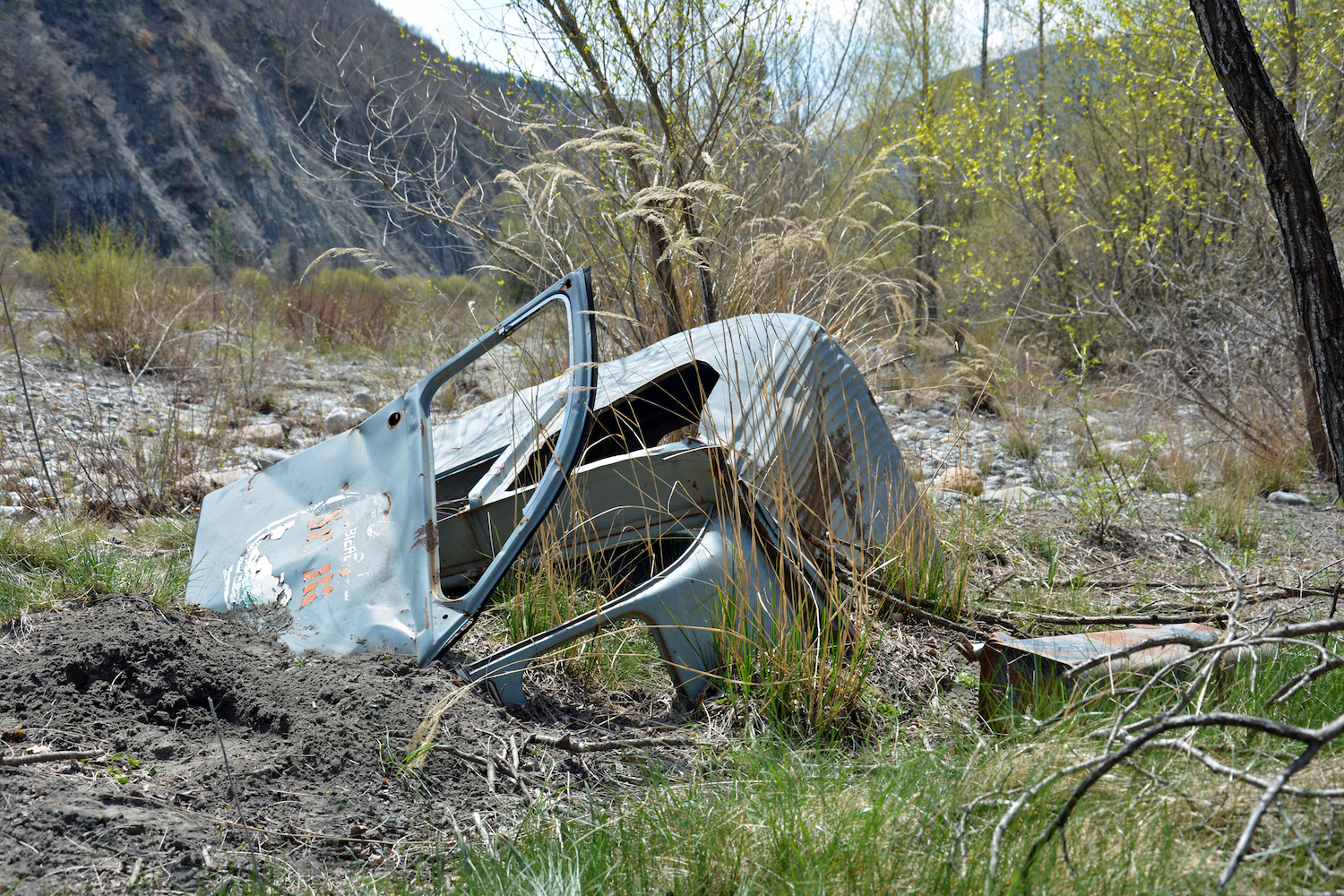Media | Articles
Why is this abandoned Citroën van buried in an Alpine riverbed?
Endless, sun-licked fields of purple lure intrepid tourists to the lower French Alps, but locals have unknowingly sown more fragments of history into the ground than farmers have dropped lavender seeds. Abandoned villages wait for anyone patient enough to listen to their tales, springs Napoleon drank from during his long trek from Elba to Paris blend into the picturesque backdrop, and rusty cars seem to grow in forests as naturally as oak trees and chanterelles. Automotive archaeology is a full-time job here.
This Citroën 2CV is doing its best to hide from prying eyes. Half-buried in the west bank of a small river, it’s an AKS 400 van built between 1970 and 1978. There’s not enough of it left—or, at least, left above the ground—to tell precisely when it was made. The registration number would help me date it and might even be original to the car; but 2CV vans had a two-piece rear license plate, and the part that should reveal when and where it was last registered is gone. The front plate hasn’t seen sunlight in decades.
The seatbelts could shed light on its story. Citroën added retractors in 1977, but any harnesses are missing. Several parts were stripped from this car, most likely before it started burrowing. So, while the shade of blue suggests it’s from the first half of the 1970s, I can’t tell for sure without pressing a buffer against the metal to see its true color. Getting a more accurate idea of when this 2CV rolled off the assembly line would require excavating it to check whether it has round headlights—which were the norm between 1970 and 1974—or the contentious rectangular units that came standard from 1975 until 1978, when the 2CV passed the torch to the Dyane-derived Acadiane. Or, of course, I could uncover its full registration number, which would be like finding its passport.

This leaves only part of the van’s passenger side from which to gather clues. Faded stickers indicate this 2CV earned its keep by delivering 33 Export and Slavia, two of the most unadventurous beers you can find in a French bistro. Its owner also peddled Coca-Cola and Oasis, if the information relayed by the stickers on the back of the van is accurate. These decals depict a heavily laden workhorse that spent its days weaving through the mountains from village to village. I bet the van’s retirement was well-earned, and I hope for the driver’s sake that its replacement had more than 35 horsepower.
Marketplace
Buy and sell classics with confidence
This is where the story gets as murky as the river after heavy rain. I’m not sure what happened after this 2CV stopped boozing up small-town bars and before it became a riverside summer home for a nation of wasps. There’s an abandoned house about 50 yards up the bank from it, but I’d bet that’s an Alpine coincidence. The van is so banged up, and so much of it is underground, that it had to have fallen into the river much further upstream. Either way, this is likely its final resting place; I can’t imagine it’s going anywhere. It’s firmly embedded into the Alps, it’ll take more than another flash flood to break it loose, and it’s not salvageable—no one will go through the trouble of yanking it out.
With that said, I’m sufficiently intrigued. I’ll pack a shovel the next time I plan to drive by it. The passenger-side headlight and maybe the front license plate might be worth a few minutes of digging.

















